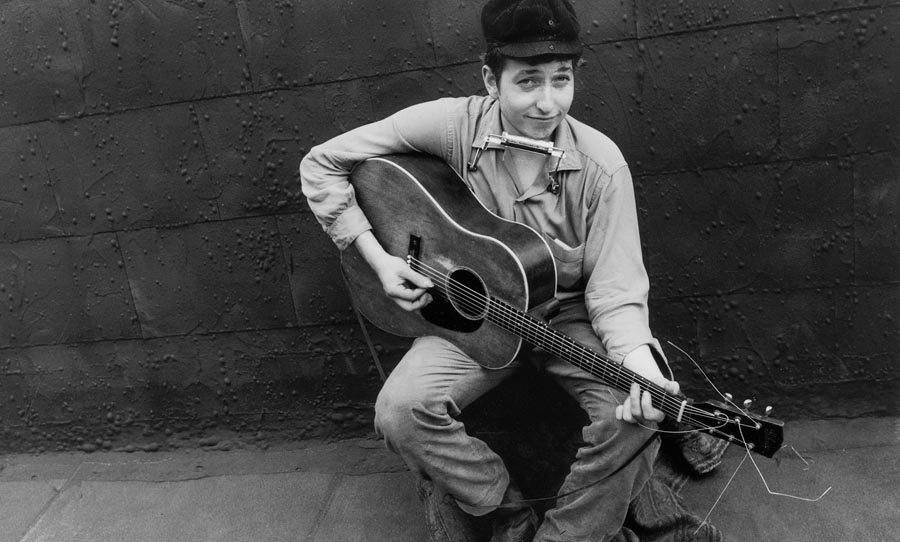
Bob Dylan’s “One-Man-Band” (Happy, 2021).
The one-man-band has helped many artists succeed and perform by creating an outlet and opportunity for artists to perform using multiple instruments without the cost of hiring other performing artists. The “One-Man-Band” has previously been identified with those who are economically challenged and is often associated with people of color, especially within the mid 1900s (Chapman 2013, 451). This is due to the fact that it is economically efficient because it does not require the singer/songwriter to play with other supporting instruments or vocalists and allows them to perform high quality and thick textured performances on their own. The transformation from the one-man-band, an example being Bob Dylan (as pictured above) into this loop pedal technology has advanced the work of those economically challenged and has allowed different types of artists and music styles to be brought forth into the industry. Additionally it has encouraged more self-sufficiency, showmanship, and self-promotion within the music industry.

Picture of Theresa Anderson during her one-woman band performance (Zuma Press, 2014).

Picture of Ed Sheeran with the loop pedal technology (Blenkinsop, 2020).
The loop pedal allows for more economic freedom within artist’s performances. If using a loop pedal, the artists does then not have to hire other performers or artists, but can create a more modernized version of a one-man band with the same sound quality and authenticity if they were to hire these other artists to perform with them. Therefore, this technology, made widely popular through “Shape of You,” creates a chance for artists who may have been economically challenged in the past to create a unique, complicated, and authentic live performance without the higher cost (Chapman 2013, 451).